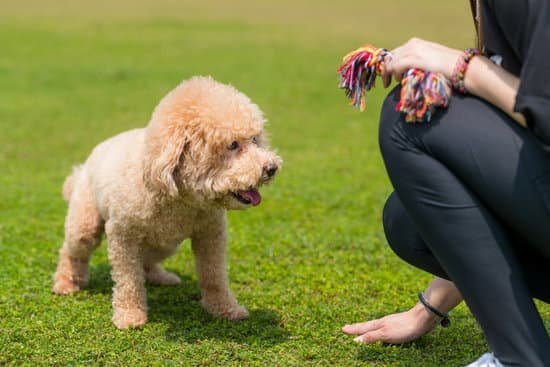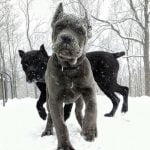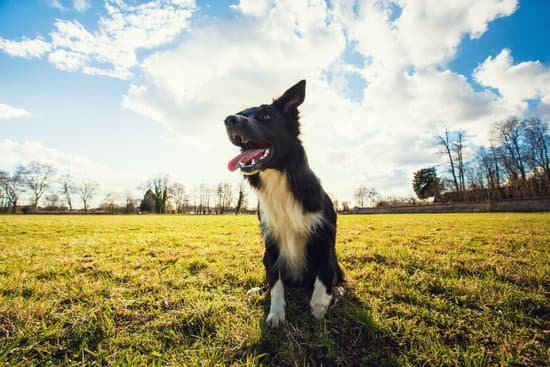Training a large young dog is crucial for their well-being and the harmony in your household. Starting early with training sets the foundation for a well-behaved and obedient dog. This article will guide you through the process of training a large young dog, discussing the unique challenges that come with their size and energy levels.
Additionally, it will explore how to create a safe and stimulating environment for training, establish basic commands, address behavioral issues, provide physical exercise and mental stimulation, and even delve into advanced training techniques. Consistency and patience are emphasized as keys to successful training, allowing you to build a strong bond with your four-legged companion. So let’s get started on this exciting journey of transforming your large young dog into an obedient and well-adjusted member of your family.
Understanding the Unique Challenges of Training a Large Young Dog
Large dog breeds present unique challenges when it comes to training. Understanding and addressing these challenges is essential for successful training and behavior management. Two key factors to consider when training a large young dog are their physical strength and energy levels, as well as the importance of proper socialization.
Large dog breeds can have impressive physical strength, which can make them more challenging to handle during training sessions. They may pull on the leash or exhibit stubbornness when learning new commands. It is important for trainers to be prepared and use appropriate techniques to manage their strength effectively.
Additionally, large dog breeds often have high energy levels. This means that they require more exercise and mental stimulation compared to smaller dogs. Failing to provide adequate outlets for their energy can result in behavioral problems such as destructive chewing or excessive barking. Training sessions should incorporate activities that engage both their mind and body, ensuring they are mentally stimulated as well.
Socialization is another crucial aspect of training large dogs. Early socialization helps them feel at ease in various environments and around different people and animals. This is particularly important for large breeds due to their size, as their behavior can be intimidating if not properly socialized. Regular exposure to different situations, people, animals, sights, sounds, and smells will help prevent any potential fear or aggression issues.
| Challenges | Considerations |
|---|---|
| Physical Strength | Use appropriate techniques |
| Energy Levels | Incorporate ample exercise and mental stimulation |
| Socialization | Prioritize early socialization for comfort in various situations |
Setting Up a Safe and Stimulating Environment for Training
Creating a designated training area
When it comes to training a large young dog, ensuring that you have a designated training area can be extremely beneficial. This area should be quiet, away from distractions, and provide enough space for your dog to move around comfortably. One option is to use a fenced-in backyard where you can set up training sessions.
This not only provides a safe and contained environment but also allows your dog to explore and move freely during training. Alternatively, you can use a spacious room inside your home or even consider renting a secure outdoor training space if necessary.
Removing potential hazards from the surroundings
Before starting any training session with your large young dog, it is crucial to eliminate any potential hazards from the surroundings. Large dogs have plenty of energy and may become easily distracted during training, so it’s important to create a safe environment where they won’t get into any trouble or injure themselves. Remove any toxic plants, sharp objects, or items that could be easily destroyed and pose a risk if chewed on.
Additionally, ensure that there are no loose wires or cables that your dog could accidentally trip over. By removing these hazards, you can focus on the training itself without worrying about potential accidents.
Providing stimulating elements in the environment
In addition to establishing a safe environment for training, it’s equally important to provide stimulating elements that can keep your large young dog engaged and motivated throughout the sessions. Consider introducing toys specifically designed for mental stimulation, such as puzzle toys or treat-dispensing toys.
These types of toys not only engage their minds but also provide rewards for successfully completing tasks or solving puzzles. Incorporating these elements into their training environment will make the experience more enjoyable for your dog while enhancing their problem-solving skills and focus.
By creating a designated training area, removing potential hazards from the surroundings, and providing stimulating elements like puzzle toys, you are setting up your large young dog for successful training sessions. This safe and engaging environment will allow you to focus on teaching essential commands and working on obedience training without distractions. Remember, a conducive training environment is crucial in building a solid foundation for further training and establishing a strong bond with your large young dog.
Establishing Basic Commands and Obedience Training
When training a large young dog, establishing basic commands and obedience training is an essential step in their development. This section will outline the importance of teaching essential commands such as sit, stay, and come, as well as how to use positive reinforcement techniques for effective training.
Teaching Essential Commands
One of the first steps in basic obedience training for a large young dog is teaching them essential commands. These commands include sit, stay, come, down, and heel. Teaching these commands not only helps to establish discipline and structure but also ensures the safety of both the dog and those around them.
To teach these commands effectively, consistency is key. Use clear verbal cues along with hand signals to help the dog understand what you expect from them. It’s important to break down each command into small steps and reward the dog with treats or praise when they successfully perform the command. Repeat this process regularly until they respond consistently to each command.
Using Positive Reinforcement Techniques
Positive reinforcement techniques are highly effective when it comes to training a large young dog. Rewarding your dog with treats, praise, or playtime immediately after they successfully follow a command reinforces their good behavior. This positive association motivates them to repeat the behavior in the future.
Rather than using punishment or harsh methods, focus on rewarding desired behaviors and ignoring or redirecting unwanted behaviors. Be patient and understanding during training sessions while keeping in mind that consistency is crucial. With time and practice, your large young dog will learn the basic commands and become obedient.
By establishing basic commands and practicing obedience training with your large young dog early on, you lay a solid foundation for their overall development and behavior. Training provides mental stimulation for these intelligent breeds while strengthening your bond through communication and mutual understanding.
Leash Training and Controlling a Large Young Dog
Leash training is an important aspect of training any dog, but it becomes even more critical when dealing with a large young dog. These breeds possess significant strength, energy levels, and power, making it crucial to establish proper leash etiquette early on.
By teaching your large young dog how to walk politely on a leash, you can ensure their safety and the safety of those around them. This section will provide valuable insights into introducing leash training to your furry friend and techniques for effectively controlling and managing them while on a leash.
Introducing the Concept of Leash Training
When starting leash training with a large young dog, it’s essential to make the experience positive and rewarding for them. Begin by allowing your dog to become acclimated to wearing a harness or collar before attaching the leash. Rewarding them with treats and praise during this initial phase can reinforce positive associations with the equipment. Once they are comfortable with wearing the harness or collar, gradually introduce the leash by attaching it to their gear without applying any tension.
Next, take short walks in familiar environments that are free from distractions to allow your dog to get used to walking alongside you without pulling or resisting. Reward them for staying close and following your lead. It’s important not to pull or jerk on the leash during these early stages as it may create negative associations or cause discomfort for your pet.
Techniques for Controlling and Managing a Large Young Dog on a Leash
Controlling a large young dog while on a leash requires some additional strategies due to their size and strength. Here are some techniques that can help you maintain control:
- Use proper equipment: Invest in sturdy leashes made from materials appropriate for larger breeds. A strong leash will provide better control over your dog.
- Practice proper grip: Hold the leash firmly but not too tight, as a tense grip may make your dog anxious or agitated. Keep the leash short enough to maintain control, but with enough slack to allow them to move freely.
- Use commands consistently: Reinforce obedience training by incorporating commands such as “heel,” “stop,” and “wait” while on walks. Consistent use of these commands will help your dog understand your expectations and reinforce their training.
- React calmly and confidently: Dogs can sense their owner’s emotions, so remaining calm and confident throughout the walk is key. If your dog becomes overly excited or starts pulling, avoid yanking on the leash or scolding them harshly. Instead, redirect their attention with a command and reward them when they respond appropriately.
By following these techniques, you can establish good walking habits for your large young dog. Remember, leash training takes time and patience, so be consistent in your efforts and provide plenty of positive reinforcement along the way. With practice, you’ll be able to enjoy peaceful walks with your well-behaved companion.
Addressing Behavioral Issues and Correcting Bad Habits
Behavioral issues and bad habits can emerge in any dog, regardless of their size or breed. However, addressing these issues in large young dogs can present unique challenges due to their physical strength and energy levels. It is essential for owners to be proactive in correcting these behaviors and redirecting them towards more appropriate alternatives. This section will provide tips and strategies for dealing with common behavioral problems in large young dogs.
Tips for Dealing with Common Behavioral Problems
One common behavioral issue that owners of large young dogs often face is jumping. Due to their size and strength, a jumping dog can easily knock over people or cause injuries. To address this problem, it is crucial to establish clear boundaries and consistently enforce them.
When the dog jumps, immediately turn your back and ignore them until they have all four paws on the ground. Once they are calm, reward them with praise or a treat to reinforce the desired behavior.
Excessive barking is another issue that needs to be addressed early on. Large breeds have loud voices, which can be disruptive to both you and your neighbors. Engaging in regular training sessions focused on teaching commands such as “quiet” or “enough” can help curb this behavior. It is important to remain patient during this process as it may take time for your dog to understand what is expected of them.
Strategies for Redirecting and Retraining Unwanted Behaviors
To effectively redirect unwanted behaviors in large young dogs, it is essential to provide alternative outlets for their energy and instincts. For example, if your dog tends to chew on furniture or shoes, make sure they have appropriate chew toys available at all times. Whenever you catch them engaging in destructive chewing, redirect their attention towards the toys and praise them when they choose the appropriate item.
Another strategy for retraining unwanted behaviors is positive reinforcement. Rather than resorting to punishment or scolding, focus on rewarding and reinforcing desired behaviors. For instance, if your dog tends to pull on the leash during walks, stop walking when they start pulling and wait for them to calm down. Once they are back by your side, reward them with praise or a treat. Consistently reinforcing the desired behavior will help your dog understand what you expect from them.
Physical Exercise and Mental Stimulation for a Large Young Dog
Large young dogs have high energy levels and require regular physical exercise to prevent boredom and ensure their overall well-being. In addition to physical exercise, mental stimulation is also crucial for these breeds to prevent behavioral problems caused by excess energy. This section will discuss the importance of providing ample physical exercise and engaging in activities that stimulate a large dog’s mind.
Firstly, it is important to understand that different dog breeds have varying exercise needs. While some large breeds may require more rigorous exercise routines, others may need moderate activity levels. Consulting with a veterinarian or professional dog trainer can help determine the appropriate amount of daily exercise for a specific breed. Generally, large dogs should participate in at least 30-60 minutes of physical activity each day.
There are various ways to provide physical exercise for a large young dog. Regular walks or jogs are great for cardiovascular health and mental stimulation, as they expose the dog to different environments and scents. Playing fetch, using flirt poles, or setting up obstacle courses in the backyard can also be entertaining options. Additionally, swimming is an excellent low-impact activity that can help maintain muscle strength without putting too much pressure on the joints.
Simultaneously, mental stimulation plays a vital role in preventing behavioral issues associated with boredom. Aside from regular training sessions, incorporating puzzle toys or treat-dispensing toys into the daily routine can keep the dog mentally engaged while satisfying their natural instincts. Obedience trials or scent work activities are other challenging yet rewarding options that allow a large young dog to utilize their intellect.
Providing both physical exercise and mental stimulation is vital for a large young dog’s health and happiness. Engaging in consistent activities not only prevents destructive behaviors but also strengthens the bond between the owner and their canine companion. By understanding individual breed requirements and incorporating various exercises into their routine, owners can ensure their large young dogs stay physically fit and mentally stimulated.
| Physical Exercise | Mental Stimulation |
|---|---|
| Daily walks or jogs | Puzzle toys |
| Frisbee or fetch games | Treat-dispensing toys |
| Swimming | Obedience trials or scent work activities |
Advanced Training Techniques for Large Young Dogs
Once your large young dog has mastered the basic commands and obedience training, it’s time to take their training to the next level. Advanced training techniques can provide mental stimulation, build trust between you and your dog, and enhance their overall obedience and problem-solving skills. Here are some effective techniques to consider when training a large young dog:
- Teaching advanced commands: Now that your dog has a strong foundation in basic commands, you can start introducing more complex commands such as “fetch,” “roll over,” or “leave it.” These advanced commands challenge your dog’s cognitive abilities and help them develop better focus and problem-solving skills.
- Exploring new training options: Consider exploring additional training activities beyond traditional obedience training. Large dogs often excel in challenging tasks like agility or scent work. Agility courses involve navigating obstacles, while scent work involves finding specific scents or objects. These activities provide physical exercise, mental stimulation, and a fun way for your dog to use their natural instincts.
- Clicker training: Clicker training is a popular positive reinforcement technique that uses a clicker sound paired with treats to mark desired behaviors. This technique allows for precise timing and clear communication with your dog during training sessions. It can be particularly effective for teaching complex tricks or behaviors.
- Targeting: Targeting is a technique where you teach your dog to touch an object (such as your hand) with their nose or paw on command. This skill can be used for various purposes, including directing your dog’s attention, teaching them to bring objects to you, or guiding them through agility courses.
- Proofing behaviors: Once your large young dog has learned a behavior indoors or in a controlled environment, it’s essential to proof their understanding of the behavior in different contexts and environments. Gradually introduce distractions such as other people or animals to ensure that they can listen and respond even in challenging situations.
Remember, advanced training techniques require patience and consistency just like the earlier stages of training. Break down each behavior or command into smaller steps, reward your dog for correct responses, and gradually increase the difficulty level as they progress.
Training should always be a positive and enjoyable experience for both you and your dog. By incorporating these advanced techniques into their training routine, you can continue to build a strong bond with your large young dog while further developing their skills and abilities.
Consistency and Patience
Consistency and patience are two essential keys to successful training when it comes to large young dogs. Training a dog, especially a larger breed, requires time, effort, and most importantly, consistency. Dogs thrive on routine and repetition, so it’s crucial to establish a consistent training schedule and stick to it. This will help your dog understand what is expected of them and reinforce their learning.
Inconsistent training can confuse your dog and make the training process much more difficult. If you give mixed signals or change the rules frequently, your dog may become frustrated and lose confidence in their ability to please you. Consistency not only applies to commands and expectations but also to the methods used during training. It’s important to choose a training method that works for both you and your dog and be consistent in applying it.
Patience is another key ingredient for successful training with large young dogs. Training takes time, especially when dealing with energetic and strong breeds. It’s important to remain patient throughout the process because getting frustrated or losing your temper can have negative effects on your dog’s progress. Remember that dogs don’t learn overnight, so be patient with them as they figure out what is expected of them.
Additionally, each dog learns at their own pace, so it’s important not to rush their progress. Celebrate small victories along the way and be understanding when they have setbacks or struggles. It’s crucial not to punish or scold your dog when they make mistakes but rather redirect them towards the correct behavior through positive reinforcement.
Consistency and patience go hand in hand when it comes to building a strong bond with your large young dog through effective training. By providing clear expectations and being patient as they learn, you are setting them up for success in becoming a well-trained companion that you can enjoy for years to come. So remember, stay consistent, remain patient, and enjoy the journey of training your large young dog.
Conclusion
In conclusion, effective training plays a crucial role in building a strong bond with your large young dog. Starting training early is essential to ensure that your dog grows up with good behavior and manners. Large dog breeds come with their own unique challenges, such as physical strength and high energy levels, but these can be successfully managed through proper training and socialization.
Creating a safe and stimulating environment for training is important in order to set your large young dog up for success. By creating a designated training area and removing potential hazards from the surroundings, you can provide an environment that promotes focus and learning.
Establishing basic commands and obedience training forms the foundation of a well-trained large young dog. Teaching commands like sit, stay, and come using positive reinforcement techniques will not only strengthen the bond between you and your dog but also promote good behavior both at home and in public.
Moreover, addressing any behavioral issues or bad habits early on is crucial for the successful development of your large young dog’s behavior. By dealing with common problems such as jumping or excessive barking promptly and redirecting unwanted behaviors through retraining strategies, you can help your dog develop into a well-behaved companion.
Consistency in training routines, along with patience throughout the process, are key elements in achieving successful training outcomes. By staying consistent in your approach and being patient with each step of the training process, you will be able to build a stronger bond with your large young dog.
Frequently Asked Questions
Are big dogs harder to train?
Training big dogs can often present unique challenges compared to training smaller breeds, but it’s not necessarily accurate to say that they are inherently harder to train. What may make training big dogs more challenging is their physical strength and size, which can make them more difficult to control during the training process. It’s important to establish yourself as a strong and authoritative leader in order to effectively train your large dog.
Consistency, patience, and positive reinforcement techniques are key when working with these breeds. Understanding their specific needs and behaviors will help you tailor your training approach accordingly.
At what age is it harder to train a dog?
While it’s generally easier to train a puppy than an adult dog regardless of size, the exact age at which it becomes harder to train a dog can vary based on individual factors. Typically, puppies are more receptive to learning new commands and behaviors due to their increased curiosity and adaptability.
As they grow older, particularly during adolescence (around 6-18 months), dogs may become more independent or stubborn, making training a bit more challenging. However, age alone should not be seen as the sole determining factor in a dog’s trainability – each dog is unique, so consider factors such as breed traits, temperament, previous experiences, and individual personality when assessing how easy or difficult it may be to train them.
How do I train my large dog?
Training a large dog requires consistency, patience, and positive reinforcement techniques for effective results. Start by establishing clear rules and boundaries for your dog’s behavior right from the beginning. Teach them basic obedience commands like sit, stay, come, down using positive reinforcement methods such as treats or praise whenever they correctly respond to your command. Leash training is also crucial for larger dogs as it helps maintain control during walks or outdoor activities.
Incorporating regular exercise into their routine not only helps keep them physically fit but also aids in burning off excess energy that could otherwise lead to destructive behavior or disobedience. Socialization with other humans and animals is equally important, so exposing your large dog to various environments, people, and animals will help them develop good social skills. Consistency and repetition are key in training a large dog; establish a routine and stick to it so that your dog knows what is expected of them. Additionally, seeking guidance from professional trainers or enrolling your dog in obedience classes can provide valuable assistance in training your large dog.

Welcome to the blog! I am a professional dog trainer and have been working with dogs for many years. In this blog, I will be discussing various topics related to dog training, including tips, tricks, and advice. I hope you find this information helpful and informative. Thanks for reading!





